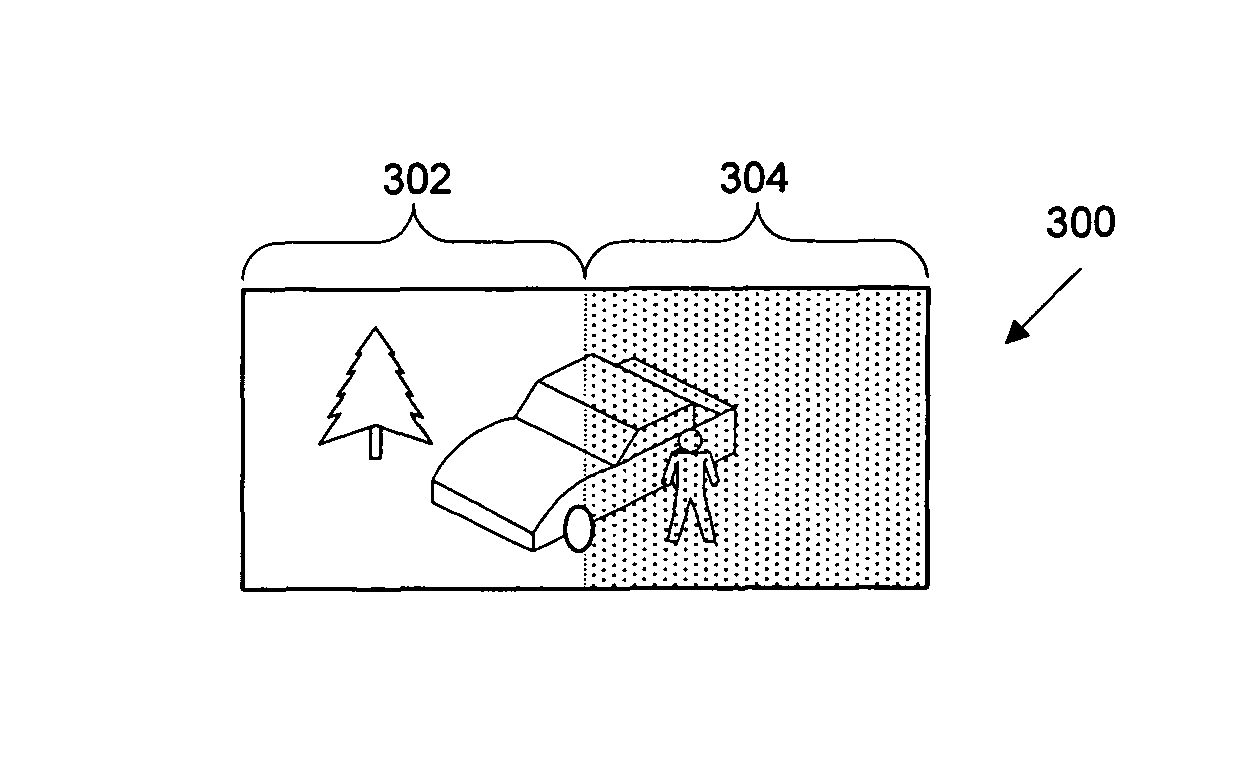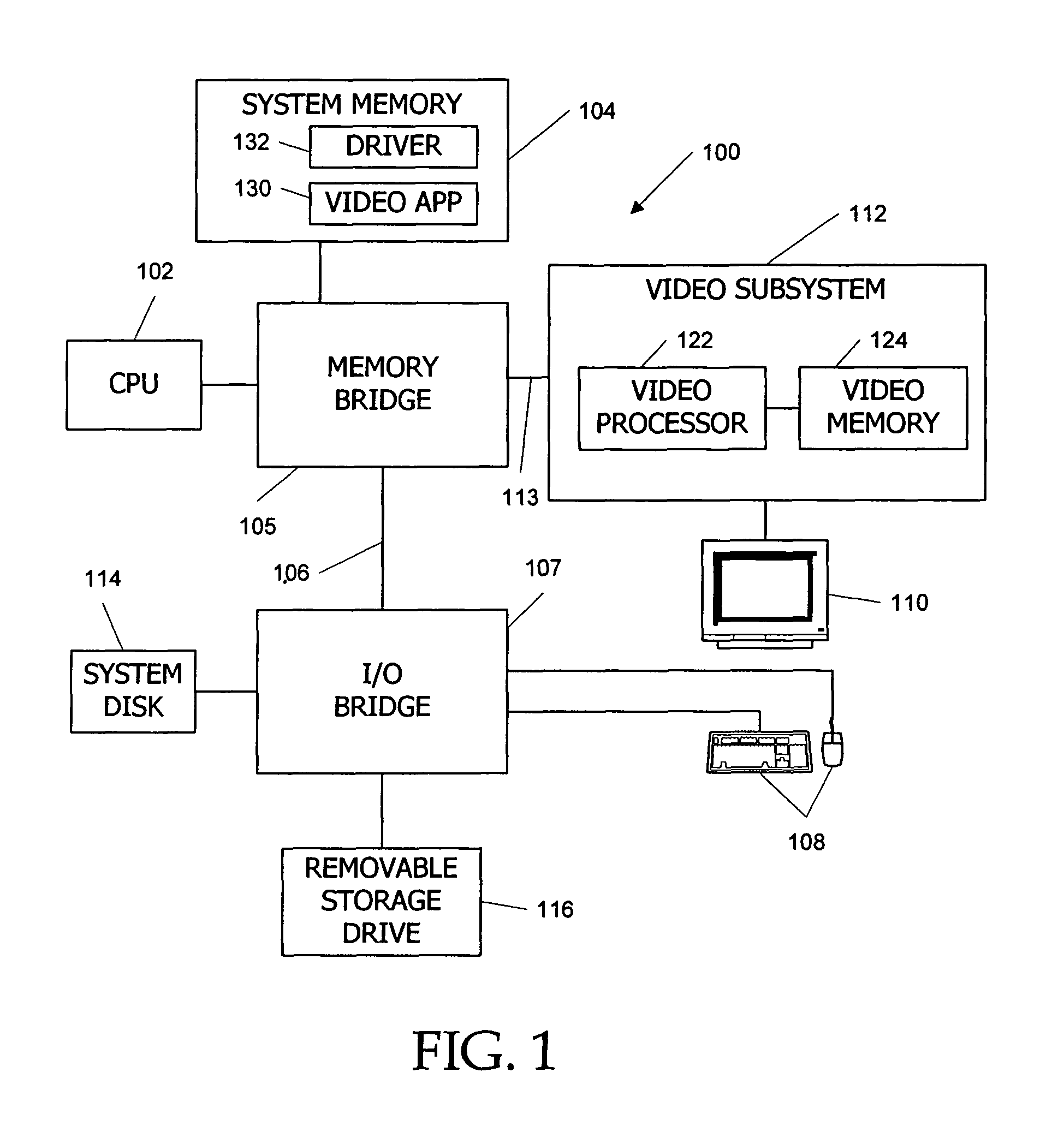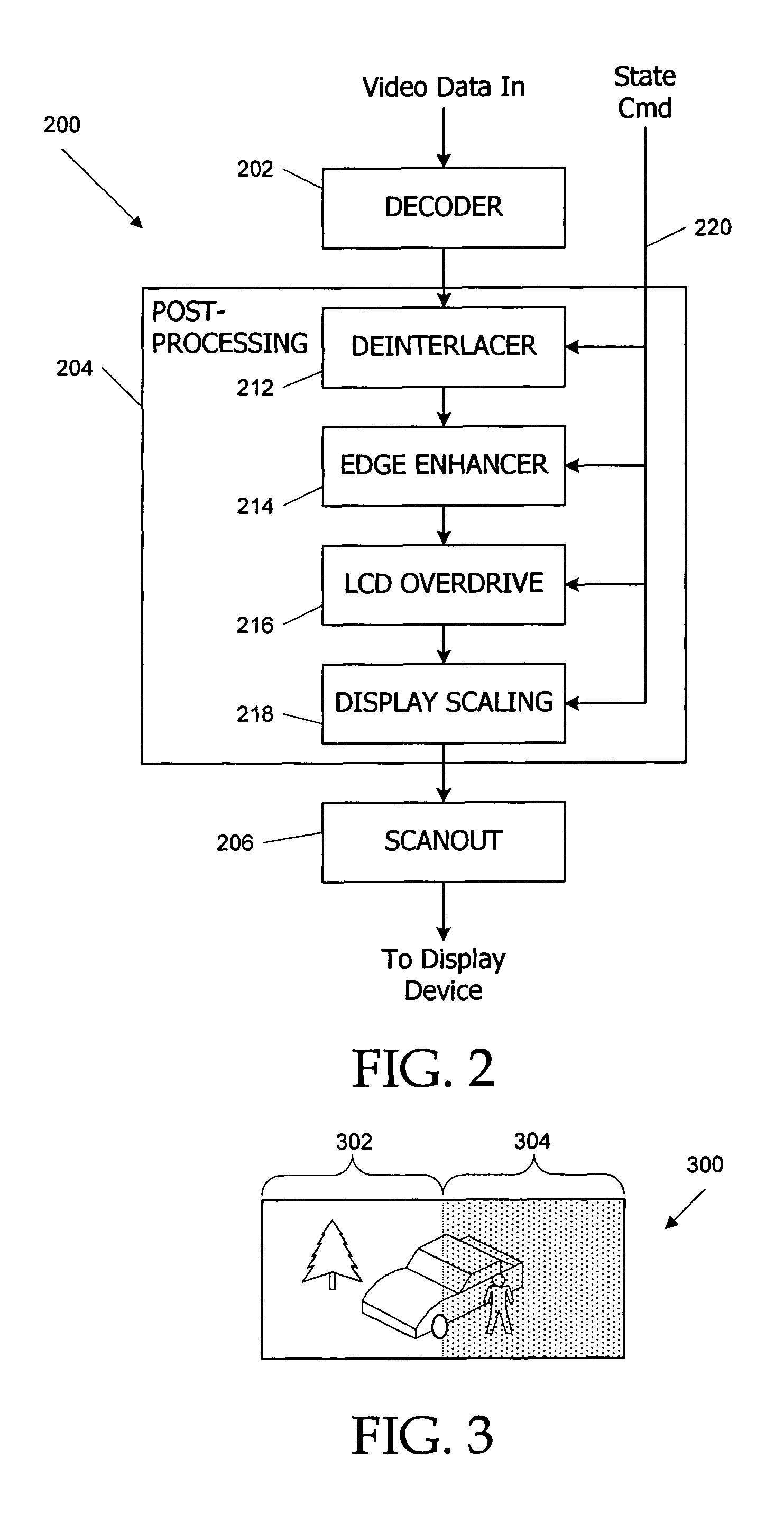Split-frame post-processing in a programmable video pipeline
- Summary
- Abstract
- Description
- Claims
- Application Information
AI Technical Summary
Benefits of technology
Problems solved by technology
Method used
Image
Examples
Embodiment Construction
[0033]Embodiments of the present invention provide split-frame post-processing techniques for use in a programmable video post-processing engine. An image (e.g., a frame of video data) is divided into a processing region and a control region. For instance, in some embodiments, the left half of the image might be the processing region while the right half is the control region; in other embodiments, a portion of the image is replicated, with one replica being used as the processing region and the other as the control region. Post-processing operations are performed for the processing region but not for the control region. The processing and control regions are then displayed simultaneously on the same display device (e.g., side by side), making it easy for a user to compare images with and without post-processing. Such comparisons can be used, e.g., to evaluate the effectiveness of video post-processing algorithms or to optimize the post-processing settings for a particular video str...
PUM
 Login to View More
Login to View More Abstract
Description
Claims
Application Information
 Login to View More
Login to View More - R&D
- Intellectual Property
- Life Sciences
- Materials
- Tech Scout
- Unparalleled Data Quality
- Higher Quality Content
- 60% Fewer Hallucinations
Browse by: Latest US Patents, China's latest patents, Technical Efficacy Thesaurus, Application Domain, Technology Topic, Popular Technical Reports.
© 2025 PatSnap. All rights reserved.Legal|Privacy policy|Modern Slavery Act Transparency Statement|Sitemap|About US| Contact US: help@patsnap.com



